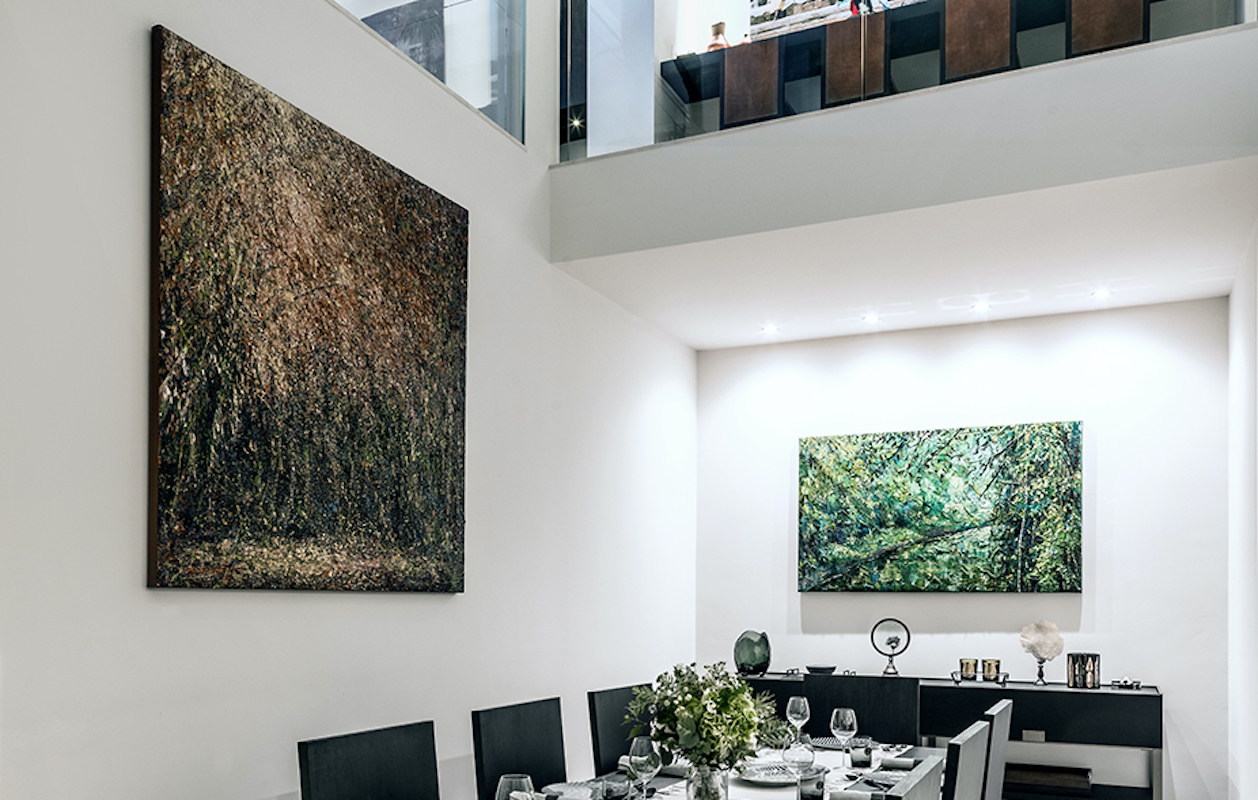This website uses cookies so that we can provide you with the best user experience possible. Cookie information is stored in your browser and performs functions such as recognising you when you return to our website and helping our team to understand which sections of the website you find most interesting and useful.
Artistic license
By Nicky Morris | 7 September 2021 | Lifestyle
How prized art collections are taking centre stage in modern homes and transforming the world of interior design

Interior design has continually evolved over the last century, with even the most stately homes becoming an increasing source of comfort, and the place where we can most express our personalities. A meticulously planned design, harmonising both function and beauty while reflecting our individuality, is an interior that we all strive for.
The desire for our homes to reflect our personal tastes is ever growing and, as art collecting becomes ever more popular to savvy investors, interior designers are faced with the task of using prized art collections as inspiration for home interiors, transforming the world of interior design as we know it as homeowners demand that their collections take centre stage.
“Interior design is never complete without artwork,” says luxury interior designer Shalini Misra. “It’s almost a living part of an interior design because the perspective of artwork changes for whoever’s seeing it.
“I absolutely love seeing my clients’ art collections,” she adds. “It’s such an interesting way to learn about one’s client’s personality and get an insight into their taste and interests. The art itself provides inspiration for the palettes and textures in the room.”

With artwork at the forefront of modern interior design, homes are becoming increasingly reflective of their owners’ identities. “Artwork is a way that people are finding they can personalise spaces easily and express their personality,” says Jo Littlefair, of luxury interior design studio Goddard Littlefair.
“I think that’s something that we’ve seen emerging for some time, that people do want to follow trends but they also want to stand out as individuals. So, we’ve definitely experienced art as an expression of personality and individualism.
“Art collecting itself is becoming more and more of a trend,’’ she says. “While we’ve worked with people who’ve had very strong opinions on art collections in the past, we’re seeing it percolate through to other clients where such an interest is more unexpected, so there’s definitely an influence trickling through.”
As art becomes an increasingly central feature of home interiors, designers like Misra and Littlefair are able to truly reflect their clients’ personalities and tastes in their designs.

WHERE THE ART IS
So what is the impact of incorporating artwork into an interior space? “It just makes a space completely come alive,” says Misra. “The moment you bring in artwork, it adds another layer, another dimension and a very strong visual experience.”
And, just as the perfect composition can transform an interior, placing creations in our home space can also give new life to our favourite works of art.
“When you see a Picasso or Matisse in a residential setting, compared to a white-space gallery, it’s really interesting.” says Littlefair. “It feels richer, and it feels much more surprising as well.”

But seamlessly blending magnificent sculptures or colourful contemporary paintings doesn’t come without its challenges. Finding the perfect space for your treasured pieces is a key part of the design process – each piece needs to be carefully considered to create a harmony between aesthetic and functional features.
“The size and the weight of each piece dictates certain elements of interior design,” says Misra. “Walls need to be wide enough for large pieces and floors sometimes need to be structurally reinforced for very weighty pieces. Therefore, the layout needs to have a lot of thought to plan where these pieces should be placed.”
Integrating artwork into your interior design also gives your home a sense of cohesion. Strategically placing your most treasured works throughout the space creates a journey throughout your home with each piece acting as a lure from one room to another.

“We often place art as a way of tempting people to walk into a room,” says Misra. “It adds to the flow, it directs you and it makes a path for you on how you should really approach the house, and of course it makes it a far more interesting journey.”
When incorporating larger pieces, such as sculptures, it’s important to ensure that the piece can be experienced at different angles. Talking of her own home interior, Misra explains why she placed a Tony Cragg sculpture at the heart of her own house, between the breakfast room and family room.
“People just circulate around it because it’s a pieceofsculpture,youcanseefromallfoursides,” says Misra. “So, it’s really important to think of the view. I like to keep a lot of space around the artwork so you can admire the pieces.”
And, of course, the beauty of using artwork to establish the tone of your home interiors is that it can be easily transformed by exchanging one piece for another.
“It’s like accessorising an outfit,” says Littlefair. “You can change a white T-shirt and jeans by wearing a hat or a pair of sunglasses or some jewellery. Just the same as you can change an interior, you can uplift it and ring the changes with artwork.”







